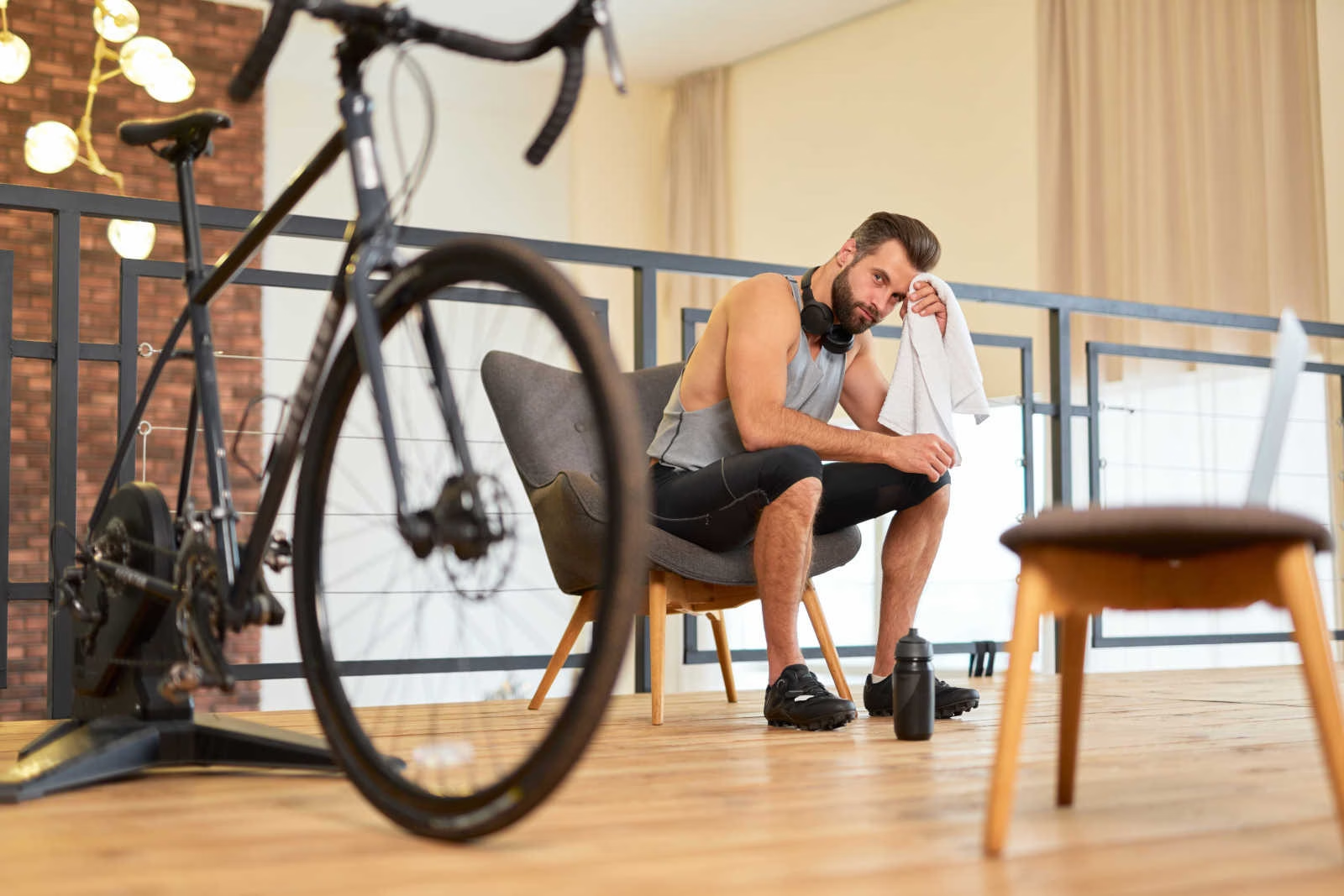Riding inside is way better with indoor training platforms like Zwift, MyWhoosh, or Rouvy…but time can tick by…very slowly. YouTube, your phone, whatever, definitely help to make it go by faster. But is that a good thing? For Peter Glassford of Consummate Athlete, this trend speaks to a major shift in the way people approach indoor training: “The number of screens that are now required to ride a bike indoors is pretty wild! It’s not rare for me to see athletes with three TVs or computer screens plus a phone and a bike computer running!” Glassford points out that the increase in ERG mode usage has made it easier for athletes to multitask and alleviate boredom, as ERG mode can take over managing resistance, allowing for a less engaged riding experience. However, he cautions that this freedom may lead the mind to wander and reduce the overall quality of the workout.
Music, movies, games?
For his own training, Glassford likes a more minimalist approach, relying only on music and his head unit to mirror his outdoor setup. “My personal preference is to ride with music and my bike computer, much like I do outside. While my approach may be due to years of that being the only option (aside from perhaps the VHS that came with old-school Fluid trainers!), I think there is still a benefit to sitting with some boredom and discomfort,” he explains.
While distraction can be valuable—online platforms, movies, and race replays provide motivation and entertainment—Glassford says that it’s essential to use them strategically. “For intense sessions or steady rides, it’s better to focus,” he advises, adding that it’s more effective to shorten the session and remain attentive than to let focus slip. Distraction during intense training may lead to inconsistent pedaling, lower cadences, and shifts in posture, which can hinder results. Glassford underscores that intentional training builds body awareness, allowing athletes to tune into their breathing, effort, and form. This internal “feel” is particularly useful when racing, as it enables the athlete to sense their limits and pace effectively.
Time and a place for distractions
Now, on the other hand, distractions can have their place during longer or recovery sessions. According to Glassford, “During longer sessions, we can likely afford periodic breaks, no different than stoplights or coffee stops in our outside training.” For these longer workouts, he suggests using screen time or phone…
Click Here to Read the Full Original Article at Canadian Cycling Magazine…

